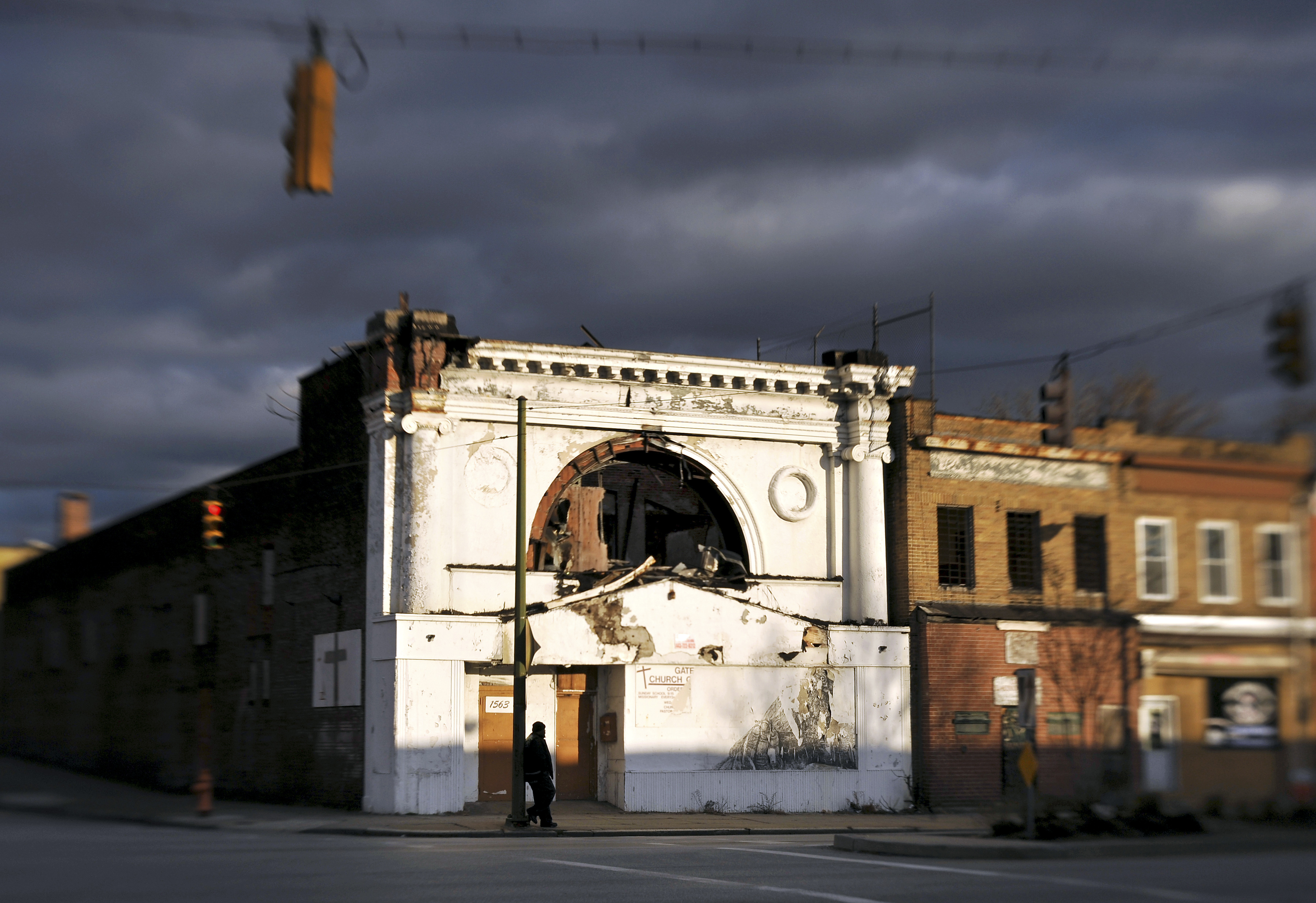New exhibition incorporates work of photographer Amy Davis to document Baltimore’s movie theaters from 1896 to the present

From “Flickering Treasures: Rediscovering Baltimore’s Forgotten Movie Theaters,” by Amy Davis. Used with permission.
WASHINGTON, D.C.—On November 17, the National Building Museum opens Flickering Treasures: Rediscovering Baltimore’s Forgotten Movie Theaters. Since the arrival of its first nickelodeon, the Maryland city has been home to more than 240 movie theaters. Today, many of these buildings survive but only a handful still function as theaters. This new exhibition uses photography, architectural fragments, theater ephemera, and personal stories to explore national trends in theater design and movie-going, illuminating themes of memory, loss, and preservation. Flickering Treasures is open through October 14, 2019.
Around the turn of the 20th century, architects and entrepreneurs worked rapidly to expand options for a new form of public amusement—projected motion pictures. Innovations like mass-produced theater decorations and equipment, as well as a general escalation in film production, triggered a boom in theater conversions and construction. Existing storefronts, repurposed as nickelodeons, were eclipsed by purpose-built theaters designed for a wide range of markets and audience types—from small-scale neighborhood houses to stunning downtown showpieces. Early theaters often presented live music and vaudeville acts, but feature films soon became the main draw. When Baltimore’s population peaked in 1950, moviegoers could choose from among 119 theaters located in the city center and surrounding “nabes.”
However, after World War II, social and technological advances contributed to a gradual, and then precipitous, decline in movie-going. Families flocked to the suburbs, and turned to television. The segregationist laws and discriminatory practices that created separate theaters for black audiences were dismantled through concerted protest. Downtown commercial districts declined and aging theaters were shuttered or razed.

After dipping to only three theaters in 2016, today the number of functioning cinemas in Baltimore has risen to five. Other locations are boarded up, burned out, or just barely hanging on. Numerous former theaters have found new life as sites of worship, their neighborhood locations and auditorium designs making them a logical choice for religious reuse. In the past few decades, significant investment has supported the preservation of several Baltimore landmarks. Early picture palaces like the Hippodrome (Thomas W. Lamb, 1914) and the Parkway (Oliver B. Wight, 1915), which both closed in the 1990s, have once again opened their doors to audiences following multi-million dollar restoration and expansion projects. Today, the Hippodrome Theatre at the France-Merrick Performing Arts Center has returned to its roots as a venue for live theater, while the Stavros Niarchos Foundation Parkway is once again screening films within its artfully stabilized auditorium as the new home for the Maryland Film Festival.
The centerpiece of Flickering Treasures is its collection of vibrant color photographs by award-winning Baltimore Sun staff photographer, Amy Davis. Davis spent over ten years researching and photographing more than 72 theaters in Baltimore—from the site of Baltimore’s first projected films, Electric Park, and the legendary Royal, to the restored glory of the Senator and countless neighborhood theaters in between. The exhibition pairs her contemporary views with vintage black-and white images to illustrate the passage of time and reveal poignant echoes of theaters’ former glory.
In addition to more than 70 framed photographs, the exhibition features more than 100 objects from Baltimore movie theaters alongside humorous and heartfelt reminiscences from residents. Numerous case studies and biographies of important architects and exhibitors highlight not only the differences between opulent downtown movie palaces and neighborhood houses, but also illuminate the lasting effects of racial segregation, suburbanization, and technological change on the movie-going experience.
Flickering Treasures is made possible by the Stavros Niarchos Foundation, STUDIOS Architecture, France-Merrick Foundation, Grunley Construction Company, Inc., and Art Deco Society of Washington, among other supporters.
RELATED PROGRAMMING
The Museum and its partners have planned a full slate of programming to complement the exhibition. The history, impact, renovation, and adaptive reuse of notable theaters—in Baltimore and Washington, D.C.—will be explored through walking tours led by architects and through experiential photography tours with Amy Davis. Movie theater historian Robert K. Headley will present his research on and photography of D.C. theaters in a talk. Visit go.nbm.org/flickeringtreasures for details.
PRESS PREVIEW
A press preview will be held on Thursday, November 15 at 10 am, and feature a tour with co-curators Amy Davis and Deborah Sorensen. RSVP to Emma Filar at efilar@nbm.org. Space is limited.
IMAGES
Images are available at go.nbm.org/flickeringtreasurespress. Caption and crediting information is provided in the same folder.
ABOUT
The National Building Museum inspires curiosity about the world we design and build. We believe that understanding the history and impact of architecture, engineering, landscape architecture, construction, and design is important for all ages. Through exhibitions and educational programs, we show how the built world has power to shape our lives, communities, and futures. Public inquiries: 202.272.2448 or visit www.nbm.org. Connect with us on Twitter, Facebook, and Instagram.
